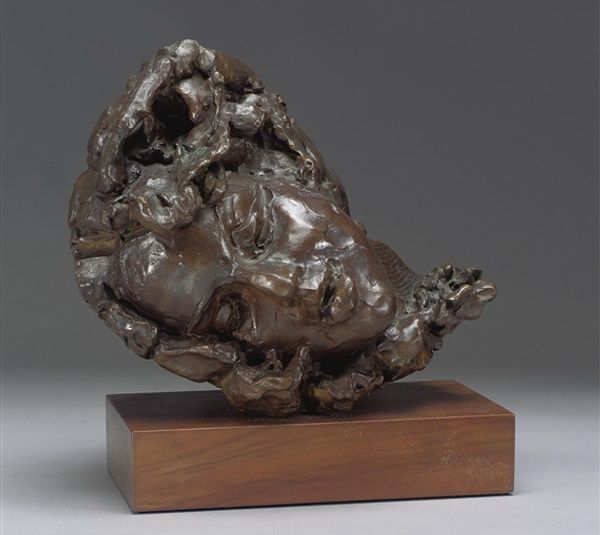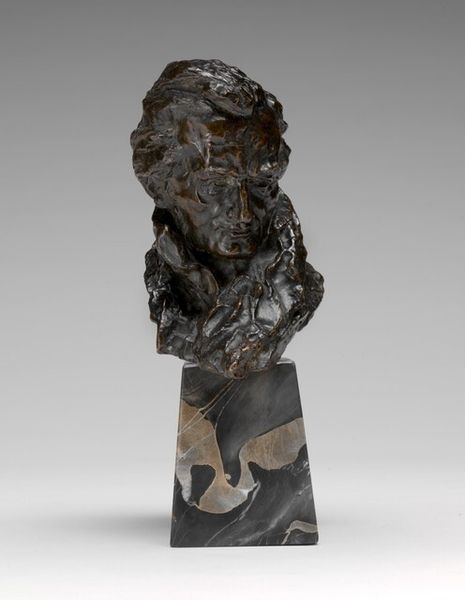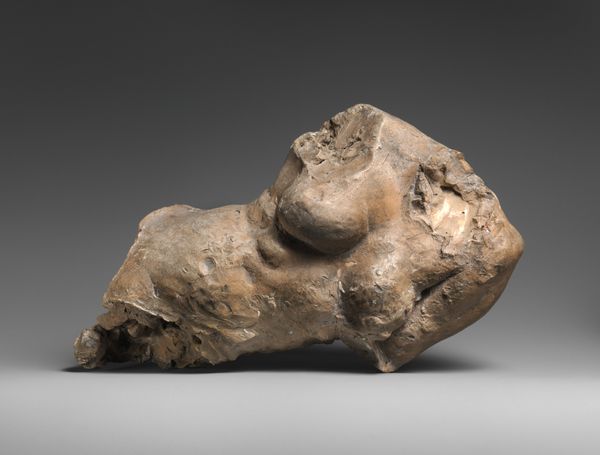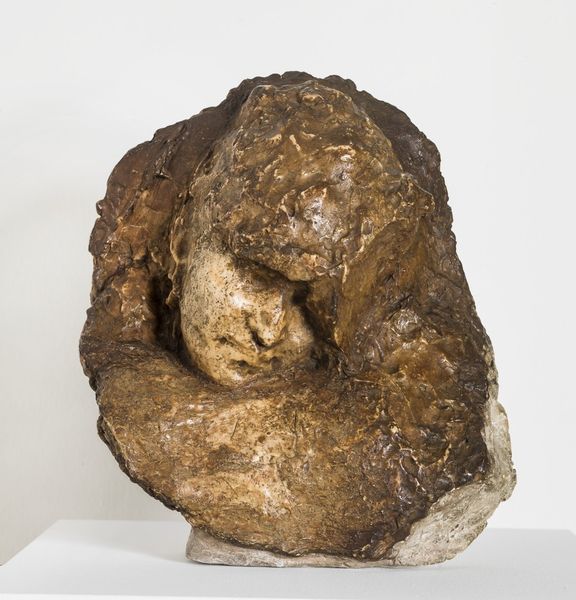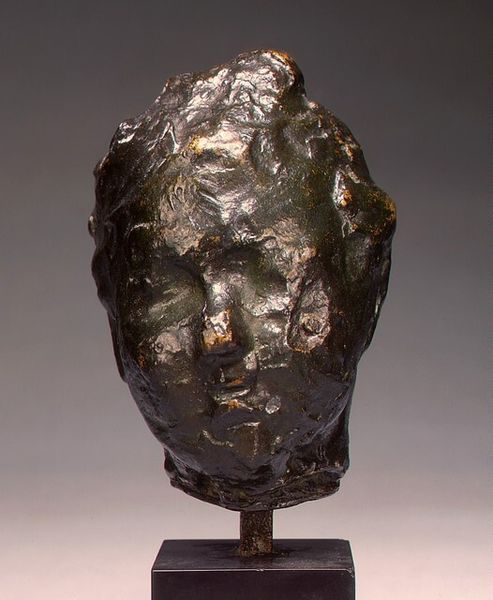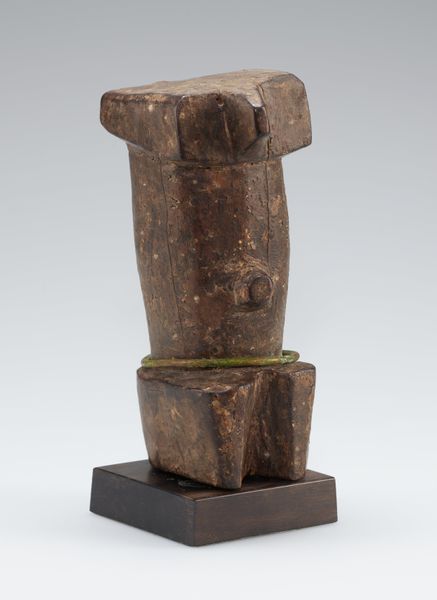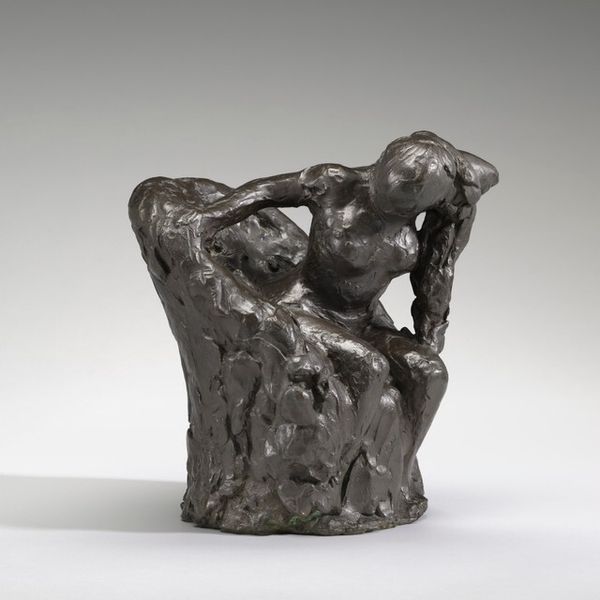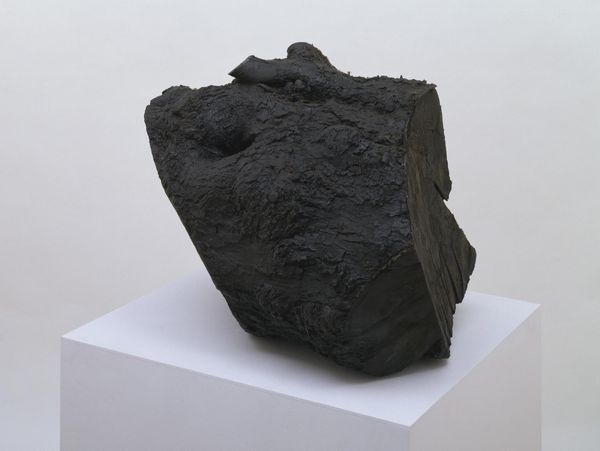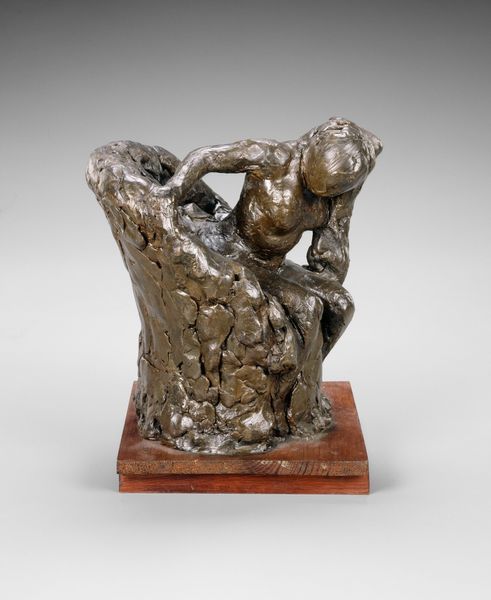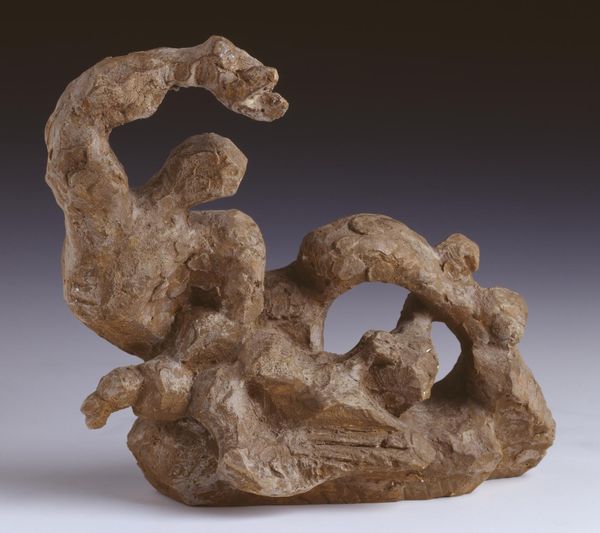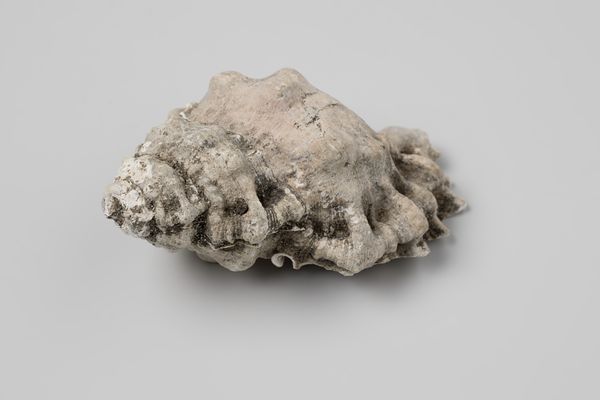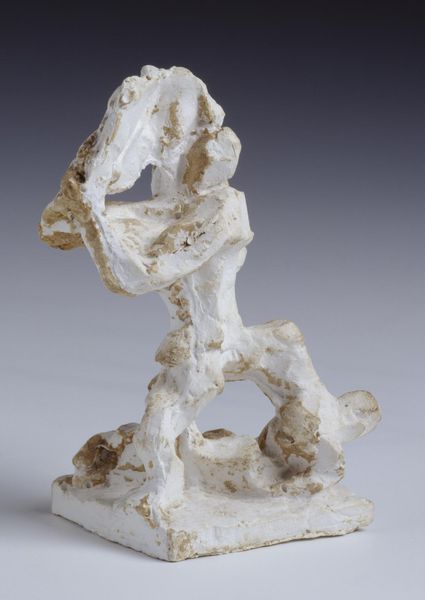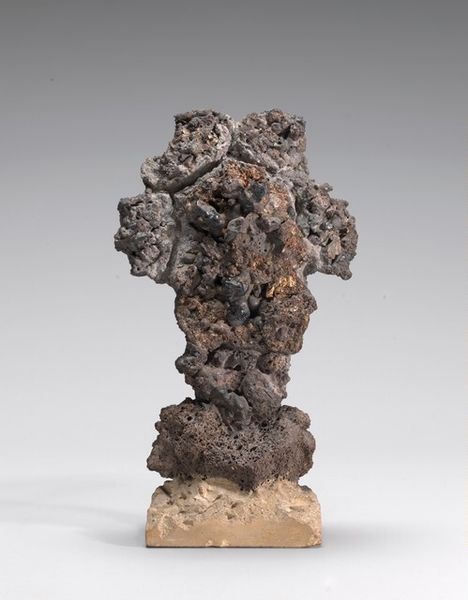
Dimensions: width_ 38.0 cm
Copyright: Städel Museum, Frankfurt am Main
Editor: We're looking at "The Golden Age," or "Aetas aurea," a bronze sculpture by Medardo Rosso, likely created between 1886 and 1896. It strikes me as… unfinished, almost like a fleeting impression captured in bronze. The texture is so rough. What do you see in this piece? Curator: Note the dissolution of form into light. Rosso, profoundly concerned with visual sensation, renders the children almost immaterial. Consider the modeling; how the rough surfaces catch the light, blurring the distinction between form and atmosphere. He's manipulating the very language of sculpture. Editor: So it’s less about precise representation and more about the overall visual experience? Curator: Precisely. Think about how Rosso captures light and its ephemeral effect, creating a sense of transience. The lack of sharp contours invites us to complete the form in our minds. Notice also the angle of the head, bent down, directing your focus. What does that elicit? Editor: A sense of intimacy, perhaps? A quiet moment? Curator: Indeed. Now consider the title. "The Golden Age" usually suggests an idealized past. But here, we have this rough, almost fragmented rendering. Do you see a contradiction, a tension between title and form? Editor: Definitely. It's like the sculpture is hinting at the ideal but not fully realizing it, focusing instead on the raw sensory experience. Curator: Precisely. Rosso challenges traditional sculptural values. He values visual perception over ideal form, elevating the importance of light, surface, and our perception of the artwork. Editor: That's fascinating. I hadn't considered the intentional fragmentation as a means of focusing on perception. Curator: The beauty lies within Rosso’s disruption of material expectations, the defiance of capturing a singular essence beyond pure feeling and the moment. Editor: I will always look at the unfinished element of works of art now and wonder at the thought of “incomplete”.
Comments
stadelmuseum about 2 years ago
⋮
The sculpture is a fragmentary depiction of a tender touch between mother and child. The shadowy modelling of the surface and the fusion of the figures with their surroundings lend the sculpture a noticeably ethereal effect. Although the work shows the wife and son of the artist, the title points towards a more universal significance: 'The Golden Age' describes the ideal original state of humankind, a utopia of perfect happiness. Rosso's work can be located between Impressionism and Symbolism for its exploratory treatment of light and surface and the simultaneous interplay between atmospheric ephemerality and earthly presence.
Join the conversation
Join millions of artists and users on Artera today and experience the ultimate creative platform.
